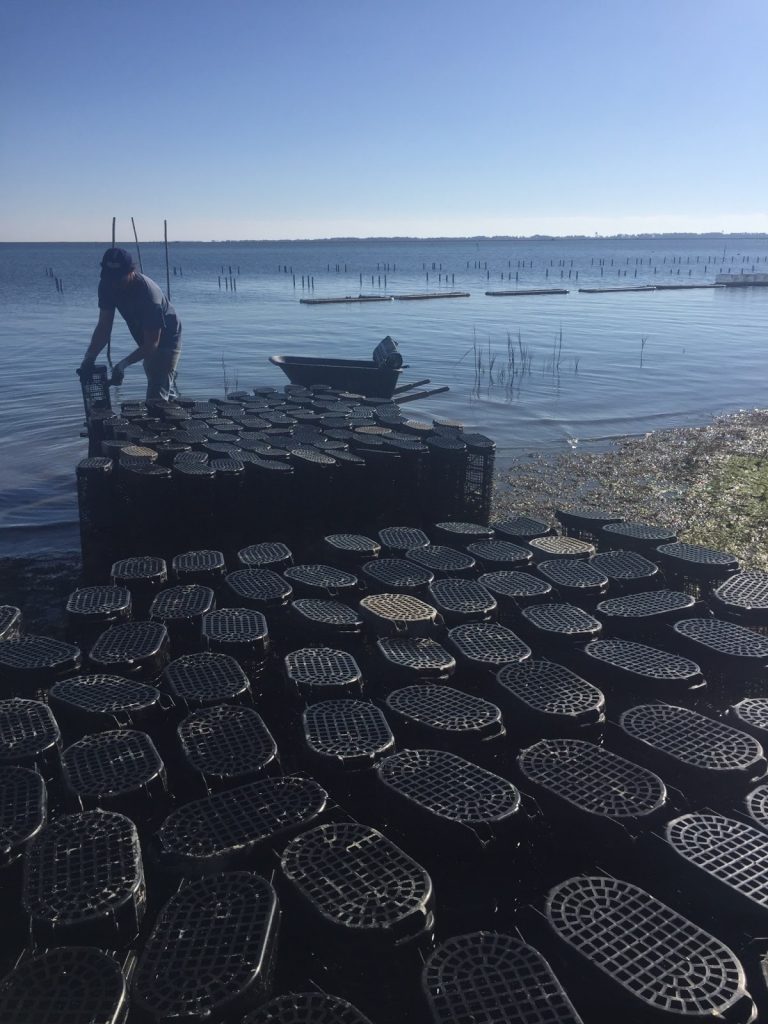
West Coast oyster tech comes east
April 23, 2018
By Treena Hein
Findings of three-year on-farm demonstration study entice Eastern seaboard oyster farms to begin adapting flip-bag technology
Oyster aquaculture in the United States has rapidly expanded in the past 20 years, and oyster cup shape, as well as taste, is critical to the consumer. Deeper cups are preferred because they suggest a higher volume of meat.
Cup shape can be manipulated through handling practices – the more an oyster is handled, the more new linear shell growth gets broken off, leading to the formation of a deeper cup. Some oyster farmers use a method of breaking off new growth by placing oysters in a “tumbling” device once in a while. A more convenient alternative is the relatively new “flip-bag” system, a conventional plastic mesh bag designed to rotate with the rise and fall of the tide, tumbling the oysters automatically.
While the flip bag method has been a big success on the West Coast, it has yet to make a big impact with growers on the East Coast. A small research project at Rogers Williams University in Rhode Island a few years ago showed that flip bags resulted in oysters of excellent quality, so the technology was further studied in a research project from 2014 to 2017 as part of a bigger plan to develop a Northeast Aquaculture Research Farm Network (NARF-Net) through on-farm demonstration projects. The use of NARF-Net “provided an excellent opportunity to evaluate the efficacy of using tide-tumbled flip bags to produce superior grade oysters on New England farms,” states the final study report, released in July 2017.
The study evaluated three styles of flip bags (Seapa, BST and ADPI bags) in terms of the grade and meat quality of the eastern oyster (Crassostrea virginica) compared to traditional rack and bag and floating culture systems.
The research team found that the flip bag system produces an oyster with higher meat content than a conventionally farmed oyster. “The application of flip bag culture yields a slower-growing but higher grade oyster, compared to traditional culture methods, with a large volume of edible tissue, which may lend itself to a higher market value,” states the final report. It cautions, however, that “careful consideration of site selection and space utilization is critical in successful application of the flip bag system.”
As of July 2017, the researchers were aware of two East Coast oyster farms (that had participated in the study) using the flip-bag system “with numerous more farms considering it.”
The study also included evaluation of artificial media to grow quahogs. The research team found preliminary evaluations “promising from a technical standpoint, where clam growth and survival was equivalent between quahogs held in oyster bags versus those reared infaunally in native substrate. However, the team said the lack of a suitable artificial substrate in terms of handling weight “precludes the use of this technology in its current form on commercial farms.”
 When installed and maintained properly
When installed and maintained properly 




